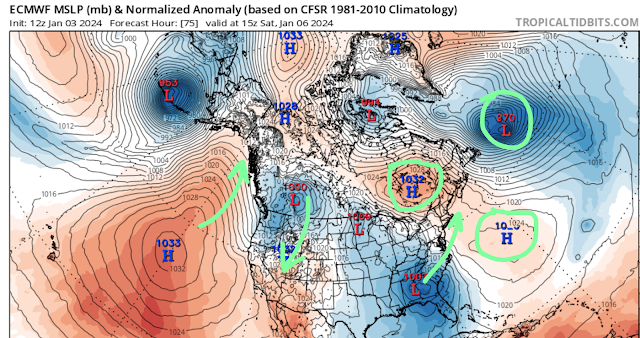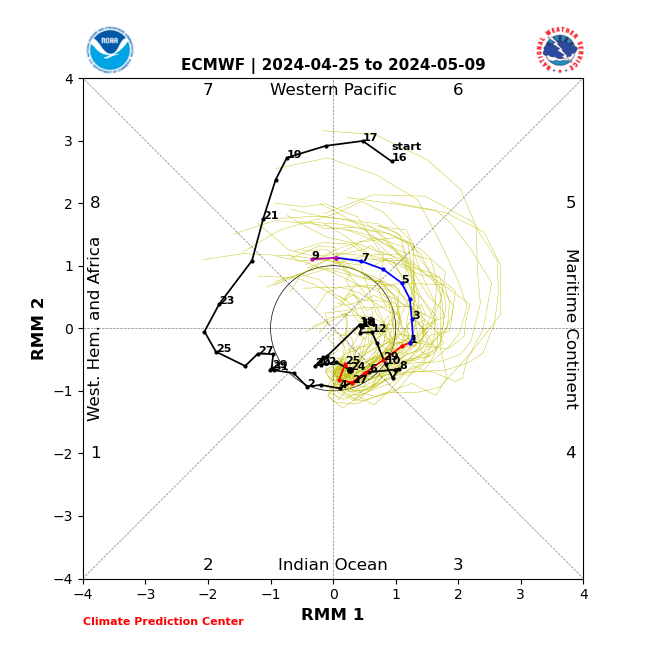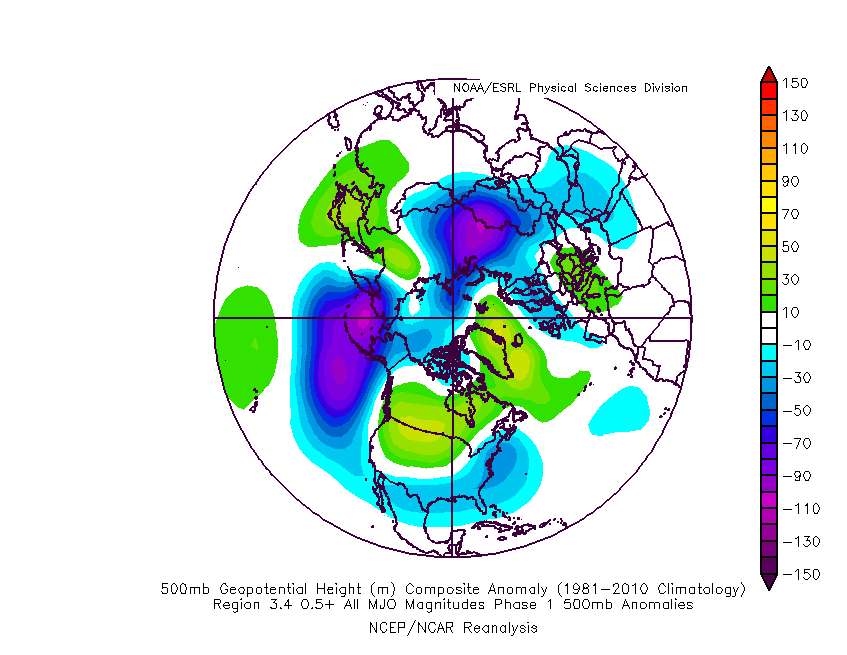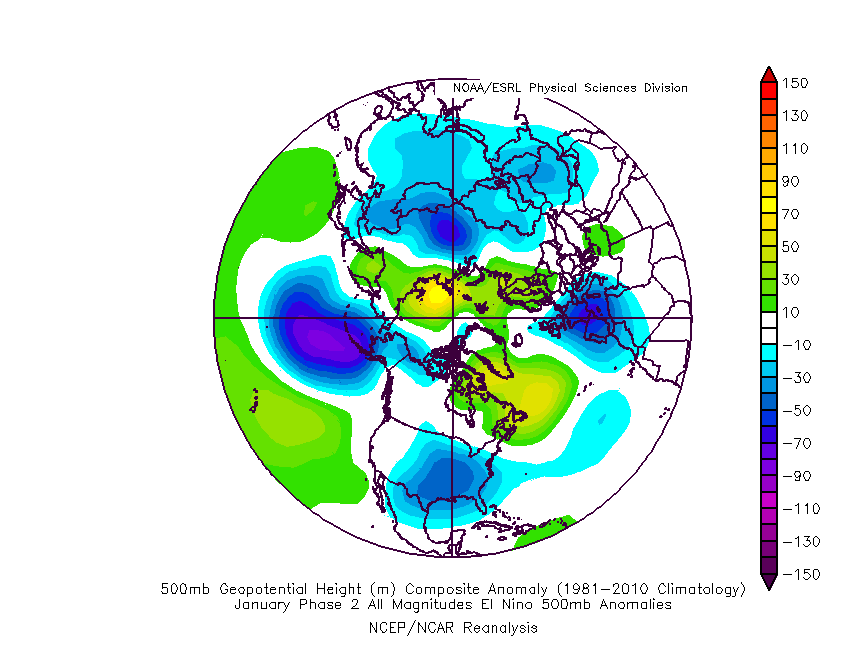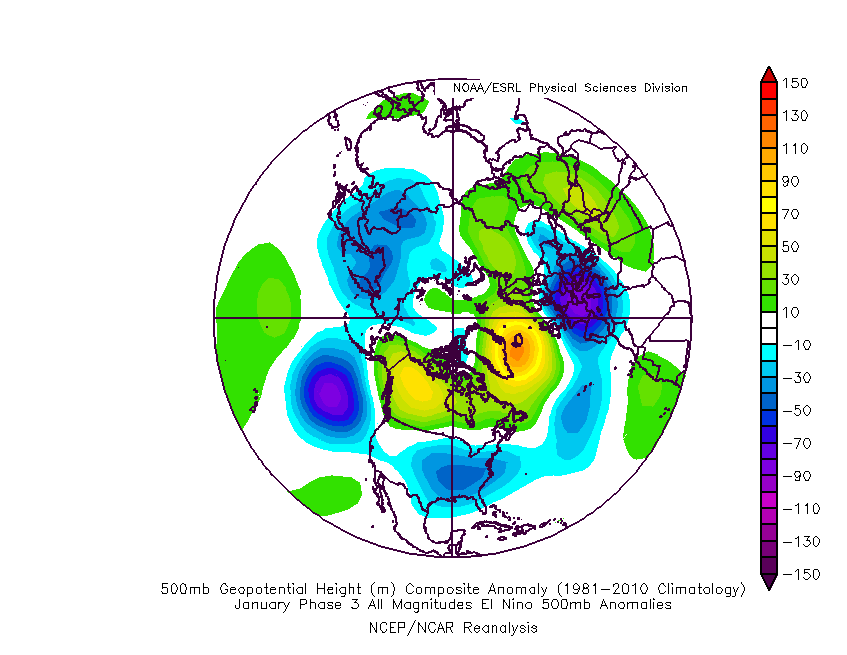-Turn volume up to listen to blog song
-Click on images to enlarge for easier view
BLOG SONG: "Born Again Tomorrow" by Bon Jovi
Ciao a tutti!
Welcome to my 4th annual 2016-2017 Winter Outlook. Behind Christmas this is my favorite time of the year as I get to share my thought's about the winter forecast with you. Last winter we saw segments of cold and a blizzard - a Roidzilla - but for the most part it was mild with few snow events. At the time our atmosphere was operating under strong El Nino conditions and the Stratospheric Polar Vortex was in an anomalously strong state. The combination of the two brought above normal temperatures to much of the United States as the Sub Tropical Jet Stream flooded the country with mild air. Don't worry cold weather lovers, the past is the past. Without further adieu, let's get into this year's forecast.
In any model there are a series of inputs required in order to come out with an output. The following factors, ranging from current atmospheric or surface observations to historical data, will be my "inputs" that backup the methodology behind my winter forecast.
- Sea Surface Temperature (SST) Profiles
- Eurasian Snow Cover
- State of the Stratosphere
1. Sea Surface Temperature (SST) Profiles
Let's start off in the all important Pacific Ocean. Here are current sea surface temperature (SST) anomalies. Red shadings point to warmer than normal and blue represents colder than normal water.
We'll start at the top and work our way south then west. The deep shades of red over the Northern Pacific, in the Gulf of Alaska, points to much above normal SST's. The above normal anomalies extend from the GOA to the western coasts of Canada and the U.S. SST's that run above normal in this part of the Pacific is indicative of a positive Pacific Decadal Oscillation (+PDO). The PDO alternates between warm and cold cycles and each cycle could last as long as 20 years on average.
In the last few years there were times when the PDO looked like it was going to go back to a cold phase but it never got there. It's also important to stress that since the Equatorial Pacific, which I will talk about soon, is flipping from El Nino to La Nina that may also impact the status of the PDO in the coming months. The last time we saw a "warm blob" like that in the northern Pacific was 2013-2014. The signal that dominated our weather pattern that year was the Eastern Pacific Oscillation (EPO).

When the EPO is negative it means the northern Pacific and Alaska are dominated by an area of High Pressure. The image on the left does a nice job of detailing the affect a -EPO has on our weather pattern. If the magnitude of a -EPO is strong, that means ridging could extend as far north as the Arctic Circle and dislodge arctic air from the North Pole into the CONUS (Continental United States). The image on the right is a snapshot of the 500mb heights in the winter of 2013-2014. Positive anomalies from the Aleutians to the western U.S. (-EPO/+PNA couplet) dominated and displaced arctic air from the Pole into southern Canada and the eastern U.S.
The warmer than normal waters send a positive feedback loop into the atmosphere which promotes sinking air, or ridging to form. Therefore it is fair to assume a +PDO increases the likelihood of ridging which leads to higher 500mb heights and above normal temperatures at the surface. This ridge would be located over Alaska, western Canada, or the western U.S. depending on its orientation and strength.

Here is an example of how a ridge, or area of High Pressure, can lead to cold weather over the central and eastern U.S. A positive Pacific North America Oscillation, or +PNA, means a ridge is presiding over the western U.S. The aforementioned +PDO suggests the PNA has a higher than normal chance of being positive this winter as opposed to negative, which would mean a trough over the western U.S. and milder weather over the east. I have high confidence the -EPO/+PNA tandem we saw in recent winters may try to return again this year, which would yield very cold weather for the central and eastern U.S. if it comes to fruition.
El Nino Southern Oscillation (ENSO)
Last winter our pattern was dominated by a very strong El Nino. The Pacific Jet was strong and kept the overall flow progressive across the U.S. Over the course of the spring and summer we saw El Nino fade and make its transition to La Nina. The state of the ENSO is characterized by warm (El Nino) or cool (La Nina) sea surface temperatures over the Tropical Pacific. NOAA has given La Nina a 70% chance to develop this fall and a 55% chance for it to persist through the winter.
Some people may just look back at prior La Nina winters and assume that is how the upcoming winter will evolve. However, that's not how it works. For example, the winter of 2010-2011 was characterized as a moderate La Nina and Central Park, NY saw about 60" of snow. Then came the winter of 2011-2012, a weak La Nina, where Central Park, NY saw just 7" of snow and mild temperatures. Exactly how strong each event is will determine what type of influence it has on the overall pattern. Since El Nino was very strong last winter, it played an instrumental role in our weather pattern. So the real question is what intensity is La Nina likely to be at this winter?

This is a general look of what the jet orientation looks like in a La Nina pattern. There is a trough near the Aleutian Islands, west-southwest of Alaska, and another dip in the polar jet stream over the eastern U.S. The eastern U.S. is essentially split in half. South of the jet (Mid-Atlantic) is normally drier and warmer than normal during La Nina, while north of there is wetter with temperatures around normal. I stress the exact intensity of La Nina will determine the accuracy of this depiction.
Statistical models are under the impression La Nina will peak in November and gradually rise to ENSO-neutral conditions through the winter. This would suggest ENSO is unlikely to play a key role in our winter weather pattern since neutral conditions over the Tropical Pacific do not have an influence on our winter pattern in the U.S. Instead, the factors I outlined early on in the blog such as PDO, Stratosphere, etc. would be our main drivers.
Since models are not always accurate let's look at other data that would give us an idea of La Nina's intensity this winter.
ENSO is broken into four regions. Nino region 3.4 is most important because that is the area NOAA uses to classify the ENSO as El Nino, La Nina, or La Nada (neutral). The standard of measure they use is known as Oceanic Nino Index (ONI), which measures sea surface temperature anomalies. If the 3-month running mean of the ONI is at or below -0.5*C for 5 consecutive months, that means ENSO will be classified as La Nina.
Here is a chart that plots the weekly ONI of each Nino region. Looking just in the Nino region 3.4 column over the last few weeks, it's apparent we are in a La Nina pattern but a very weak one. The week of October 5th is the 'strongest' the Nina got to at -0.9*C, but its weakened in the subsequent weeks. Nino region 1+2 has not even maintained a colder than normal ONI. This looks more like a central to slightly west based weak La Nina judging off real-time ONI data.

Since it's not in the text data yet, I figured I'll look at how the SSTA's have progressed in the last 7 days. The deep shades of blue between the Dateline (180) and 120W over the Equator means La Nina has strengthened in the last 7 days. Another measure of intensity that would help us understand this better is the SOI, or Southern Oscillation Index, which calculates difference in pressure between Tahiti and Darwin. An SOI higher than +7 means La Nina is in a healthy state. If the SOI is +10 or higher it means La Nina has control and is in a moderate to strong level.
According to this recorder, over the last 30 days the SOI is actually negative and over the last 90 falls below the +7 threshold.
The evidence is quite clear between the statistical models and the ONI / SOI trends over the last few weeks, La Nina will remain weak and possibly dissipate by the middle to end of winter.
Indian Ocean Dipole (IOD)
Think of the IOD as the Indian Ocean's version of the ENSO. It is a measure of temperature gradients in the Arabian Sea (western Indian Ocean) and eastern Indian Ocean south of Indonesia. Depending on which side the cool and warm waters are on depends on the phase the IOD is in (positive or negative).
A positive IOD (top image) has above normal SST's in the western Indian Ocean while a negative phase (bottom image) has the warm waters in the eastern Indian Ocean. A negative IOD often forms during La Nina ENSO events.
Current SSTA's in this part of the world suggest the IOD is in a negative phase. You can clearly see the above normal water between Australia and Indonesia. In a negative phase, winds turn westerly and there is increased convection, or tropical forcing, that brings wetter than normal conditions to Australia and surrounding islands. The reason I bring up the IOD is because I think it will play a role in how the MJO, or Madden-Julian Oscillation, behaves this winter.
The MJO is not an easy phenomena to explain. To get a deeper understanding of this oscillation, I suggest reading Scott Dubato's explanation from the NJ Strong Weather forum. Click here. Essentially, the MJO can be in any of the above phases (1 to 8) and is defined by eastward moving "pulse" of convection across the Indian and western Pacific Ocean over the Equator. It's also important to understand that the MJO is not a seasonal feature. It is transient and usually recurs every 30 to 60 days. Phases 8-1-2 of the MJO historically points to colder than normal weather for the eastern U.S. Since the IOD is expected to be negative, convection in the form of Outgoing Longwave Radiation (OLR) is likely to develop in the eastern Indian Ocean and propagate east. The tropical forcing associated with these waves over MJO phases 8-1 (see above map) near the Dateline could enhance a ridge to form over the northern Pacific. There just happens to be a "warm blob" of SSTA's there as well (already discussed) so the probability of seeing a -EPO/+PNA couplet this winter is very high.

Let's think hypothetically and say a strong tropical wave forms in the eastern Indian Ocean and begins to propagate east. Above are 500mb height anomaly maps for the MJO in phases 8, 1, and 2 using La Nina composites. All these phases yield very cold conditions for the central and eastern U.S. It is no guarantee the MJO will be active or in any of these phases, but given current SSTA's and the IOD, I think there is a good shot.
Atlantic SST's
SSTA's in the Atlantic Ocean are also worth talking about. SSTA's in the central and western Atlantic are running well above normal. You probably remember from the summer how warm the water at the Jersey Shore was this year. Also this summer we saw the WAR (western Atlantic ridge) flex its muscles on more than one occasion. Since we still see very warm SST's in the Atlantic, and La Nina patterns have a tendency to enhance the southeastern ridge, then a very tight and noticeable gradient pattern could develop at some point this winter. This depends on how strong and south the Polar jet stream gets. The gradient between the trough caused by the dip in the polar jet and the ridge from the south could call for the development of intense low pressure systems to form. If the air is just cold enough for snow, snowfall rates could be very impressive due to the unstable atmosphere a gradient pattern creates.
2. Eurasian Snow Cover
The purpose of discussing and analyzing the SCE (snow cover extent) and SAI (snow advanced index) in Eurasia is so we can get an idea of which phase the Arctic Oscillation (AO) will be in this winter. A negative AO displaces arctic air from the North Pole and sends it south. A positive AO keeps the arctic air bottled up in the, you guessed it, the Arctic. As long as there is a driving mechanism to bring the cold into the CONUS during negative AO episodes, such as a +PNA or -EPO, then much of the area will experience below normal temperatures when the AO is negative. Additionally, above normal SCE in Eurasia enhances feedback from the Troposphere to the Stratosphere as Rosby waves travel up our atmosphere. I will talk more about the Stratosphere and this type of interaction in the next segment.

A look at SCE in the Northern Hemisphere and Eurasia shows we're dead even compared to last year. According to Judah Cohen, a Meteorologist from AER, the faster the snow advance is in Siberia the higher the odds the AO will be negative for the ensuing winter.
In theory, the SAI is the rate at which snow accumulates in Siberia and the SCE is how expansive the snow cover gets across Eurasia, NH, and NA.
Here is how snow cover has progressed though October in the Northern Hemisphere. Very impressive gains in the lower latitudes of Canada and central and western portions of Siberia.
The GFS forecasts these gains to continue through the first week of November. Take a look at the green circles on the bottom image, which is snowfall depth as of November 9th. Compare that to the top image and you can see the GFS is predicting snow cover to expand in the coming days. What I am unsure about is how this compares relative to normal. However, if you are a winter weather lover I would think this news is better than the alternative. Right?
What I am encouraged by is the snow growth in Canada, which is better than last year actually. Establishing a cold air mass earlier than normal means stronger cold air masses may intrude our area at any given time this winter. The degree to how negative the AO gets also plays a role in how strong the arctic blasts will be.
I do not want to make a forecast on the AO yet until the conclusion of the next segment, the Stratosphere.
3. Stratosphere
There are two layers of the atmosphere that everyone should be familiar with. The Troposphere is the first layer and is responsible for the weather we see at the surface. Basically it's the layer of the atmosphere we live in. The Stratosphere is situated directly above the Troposphere. Air pressure in the Stratosphere ranges from 100 hPa (lower level) to 1 hPa (upper level). 10, 30, and 50 hPa is considered the 'middle' Stratosphere. Here's a visual for ya:

There are two types of Vortex. The Tropospheric and Stratospheric Vortex. The colder temperatures are in the mid-levels of the Stratosphere, the stronger the Stratospheric Vortex will be. This means the Tropospheric Vortex is also likely to be very strong. When the Vortex' are strong, the AO has a high chance of being positive. I mentioned earlier a positive AO keeps arctic air bottled up in the North Pole. The most common way to get a sustained negative AO in the Troposphere is to weaken the Stratospheric Vortex. The Quasi Biennial Oscillation (QBO) and SCE & SAI at the surface of the Troposphere are significant factors that not just help weaken the Stratospheric PV, but lead to a displacement or possible split which would have pronounced impacts on our winter weather pattern.
Like some of the other oscillations talked about in this outlook, the QBO will be in either a positive or negative phase. The QBO measures tropical stratospheric winds that descend in an easterly then westerly direction over a 28 month period. Typically, a negative QBO (easterly winds) weakens the Stratospheric Vortex while a positive QBO (westerly winds) strengthens the Stratospheric Vortex.
Above are the September (ignore the values circled in red, that is actually August) values of the 30 and 50 hPa QBO. Both 30 and 50 hPA show the QBO to be in a westerly phase. What is interesting is at 30mb the QBO never reversed to an easterly phase over this past spring and summer. It got close but never made it all the way. One reason for that may have been because of the strong El Nino. To read more, click here. In general, strong ENSO events can lock the QBO phase and this is one reason why we're seeing unusual behavior with the Strat PV this Fall.

The black line is where Stratospheric zonal winds should be this time of year. The purple is actual observations and orange is the forecast. I did not do the research, but I am not sure if there has ever been a time where zonal winds were this weak very early in the season. I am assuming this may have been due to the dichotomy of the QBO winds at the mid-levels, but nevertheless it's interesting and has given us a weak Stratospheric Vortex to start the year. However, you can see zonal winds are expected to intensify in the coming weeks and the Stratospheric Vortex is likely to return to a normal intensity by late November.

Although strengthening is expected in the coming weeks, a lot of the damage has already been done. Here is a look of 30 hPa geopotential heights from the EURO valid November 1st. A huge chunk of the Stratospheric PV is over North America with positive heights building over the north Atlantic and Barring Sea. The Stratospheric PV is already in a very weak state for this time of year, and due to this anomalous warming, the end of November into December is likely to start off on the cold and possibly snowy side for our area. Effects of Stratospheric warming do not translate to the Troposphere until about 14 days after the warming event.
Another factor that could influence the strength of the Stratospheric Vortex is the SCE and SAI across Siberia. Siberian snow cover, specifically with good depth, allows High Pressure to form over Siberia which intensifies Rosby wave breaking patterns seen from the Troposphere to the Stratosphere.
Here is a timeline put together by Cohen that shows the process that takes place between the Troposphere and Stratosphere during low or high snow cover years. From what I see with a weaker Stratospheric PV this year compared to last, interesting SST profiles in the Pacific that could lead to an active MJO, and snow cover in Eurasia continuing to expand into the first week of November, I think the AO will be in a mainly negative state this year. Therefore, a Sudden Stratospheric Warming Event has a higher than normal chance of coming to fruition. Especially if the tropical forcing over the Equator pans out and forces Rosby waves to "break"or deflect off mountain ranges and into the Stratosphere as heat flux, which leads to gradual warming in the lower and mid levels.
Official 2016-2017 Winter Forecast
NYC Metro Forecast:
For the Metro area I think we'll see a lot more cold-bred storms. This means Alberta Clippers strengthening near the coast or re-forming into Miller B coastal low's. Also, "Southwest Flow Event" storms, latitude-dependent or gradient-like storms, could be common this year as well. SWFE storms could bring intense snowfall rates if you're just north of the temperature gradient between the trough and southeast ridge. I do not expect record-breaking warmth like we saw last year, but there will be at least one mild spell around Christmas or early January.
Expect near normal snowfall and if I had to choose slightly above or below I would go with above. I would say around 30" of snow is a good bet for this winter. Temperatures will be near normal with 1 or 2 very warm periods and at least 1 very cold period. In the end, it should even to normal and if I had to choose which way they will lean I would go with slightly below normal.
General thought's:
- Early disruption of the Stratospheric PV will lead to below normal temperatures and early-season snowfall for much of the northern and eastern U.S. around Thanksgiving through mid-December.
- A Sudden Stratospheric Warming Event will take place in the middle to end of January which will set the stage for extreme cold to enter the central and eastern CONUS in February.
- Warm Atlantic sea surface temperatures and weak La Nina conditions will keep temperatures warm for the southern U.S, with the southeast ridge reaching as far north as NYC at times.
- There will be a noticeable thaw late December or early January.
- Godzilla storms (12"+ snowstorms) will be difficult to come by. More light to moderate events are expected.
- An early Spring. As early as March.
What Can Change the Outcome?
There are a few events that could take place that would change the outcome of this outlook:
- I did not speak about the NAO at all. The North Atlantic Oscillation is another teleconnection that has direct influence over our weather pattern. In my opinion, it's one of the most challenging signals to forecast . If the NAO is in an extreme positive state, that could allow the southeast ridge to overpower the east and keep us mild. The only way to combat that would be for the EPO & AO to be negative so the northern trough keeps the SE ridge muted.
- The Sudden Stratospheric Warming Event fails, or the PV ends up on the wrong side of the globe. Sometimes SSWE displace the PV in a spot that would not bring any impacts to our area. This is why a wave 2 warming event, or a split of the Strat PV, are preferable.
- The MJO stays in the "circle of death" or inactive. That means tropical forcing won't be as prevalent and with a cooling trend in the PDO in the Northern Pacific, I would be considered of a +EPO which would make for a hard time trying to get cold air into the central and eastern CONUS.
The last point is the one I am most concerned about. It will be interesting to see how the tropical forcing comes together since La Nina is expected to peak in November. Hopefully the -IOD is able to drive convection across the favorable MJO regions.
I hope you enjoyed reading this year's winter outlook. Please click here to join the forum and become part of our community.
Thanks for reading.
Best,
Frank Paparatto



